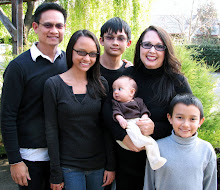 a visit to Benner Creek near Chester, CA
a visit to Benner Creek near Chester, CAWhen I had studied the human body in medical school, we spent much time naming every single bone, muscle, and organ in the body, we diagrammed metabolic processes, and we learned about disease and pharmacological treatments. Along with studies of the biological sciences as an undergrad at UC Davis, I came away with knowledge of other life forms as lesser species. It seemed that in our efforts in learning more about ourselves and our world, we are actually creating a widening rift between us and everything else. They are unicellular, we are multicellular with specialized cells. Their behavior is only instinct, while our cortical functions help us think things through. This is air, water, and fire, we are humans who can control the elements.
Rarely in our academic studies in the sciences do we appreciate the relationships of us and the universe. Rarely are we given entrance into modes of thought that are more enlightened. It is no wonder that many systems today (economic, healthcare, environmental, government) are deteriorating. We are in need of new paradigms of thought that will lead to new ways to be responsibly and joyfully active in our work on this earth.
A physics block with the serendipitous addition of some physiology for grade eight at East Bay Waldorf gave me a new paradigm of thought. It not only gave me that good teachery feeling of bringing something special to the students, but it gave me that awesome feeling of an aha moment!
In physics with grade eight, we had been talking about heat, light, water, air, and electromagnetism. They can be regarded as the fundamental elements of fire, earth, water, and air. These elements are omnipresent around us, carefully balanced in nature. In terms of their movement and the way we experience them, they exist as a physical presence through flow and force.
Flow and force. Like the yin and yang, flow and force is like male and female, death and birth, night and day. Equal and synergistic, like a magnetic field. The elements surge with power and grace, with strength and restraint, with awe and subtlety.
We appreciate and interact with the elements everyday. The heat of the sun on bare skin, the crunch of river rock during a stroll along the river, water on the fingertips, a breeze to cool the nape of your neck.
And as humans of high cortical function, we even go a step further and try to control the elements. In our study of physics, we gained knowledge of elemental properties, and often this knowledge allows us to control them for human use. The convection of air conditioning systems, refraction of light for corrective lenses, hydraulics, pneumatics, electric motors, and mag lev trains. I will not argue that our technology serves us and the world in some fantastic ways. But let's view the elements from a different light.
In thinking of the elements (the physics) through the human body (the physiology), we discover a much deeper relationship with the elements. Charles Kovacs, in his book Muscles and Bones, touches on this relationship. And forgive me for this non-Waldorfy reference: Yoda, the Jedi Master, also shares this view. The force and flow of the elements are not only outside of us, and they are also more than something we can manipulate, they are within us.
We are the elements.
The fire element, the Sun, the magma that flows within the earth's core, is present in us. To maintain optimum metabolism, our bodies stay heated at 98.6 degrees F, and many chemical reactions in our bodies need heat and produce heat. We have a heat body.
The water element, the oceans, the polar ice caps, Mars with its frozen tundra, is present in us. We are essentially water, as our bodies are about 70 % water and share the same density as water. We have a water body.
The air element, the earth's atmosphere, oxygen, nitrogen, carbon dioxide, is present in us. With every breath we take, air flows through our lungs and our blood, and every cell of our bodies. Our bones, as strong as they are, have air pockets. We have an air body.
The earth element, stones, seashells, minerals, magnetic fields, bones and nerves, is in us. Like the electromagnetic force of the universe, our nervous system is powered by the flow of electricity and ions. Like the minerals of the earth, our bones are as tough and seemingly inert, the solid material of our bodies. We have an earth body.
In this perspective, with humility, we are of the elements, without which, the human organism would not exist.
We are one with the universe in this regard. The flow and the force of the elements surge within us. The new paradigm of thought that may allow us to live in harmony with our earth is to know that nurturing earth is the same as nurturing humankind. As we proceed with our human needs, we must encompass the needs of the earth. Physiology and physics must be studied and applied together. Thinking, feeling, and doing for us.
Us, as in all things.

















